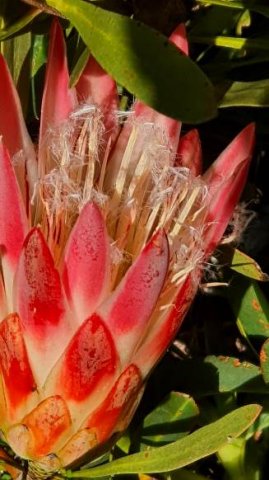Protea repens but not creeping

Author: Ivan Lätti
Photographer: Uri Mitrani
Linnaeus named Protea repens in the middle of the eighteenth century from the appearance of a specimen of a creeping plant that reached him in Sweden from the Cape Colony (repens meaning creeping).
Thunberg, student and follower of Linnaeus, later named the plant P. mellifera, meaning honey-bearing. This was done on account of the copious production of sweet nectar occurring in the flowerheads. This juice was eagerly collected by early colonists, the native population and today still by honeybees.
Unfortunately, the date of the more appropriate name was documented later, therefore not retained in accordance with the conventions of botanical nomenclature (Manning, 2007; Rebelo, 1995; Rourke, 1980; iNaturalist).

